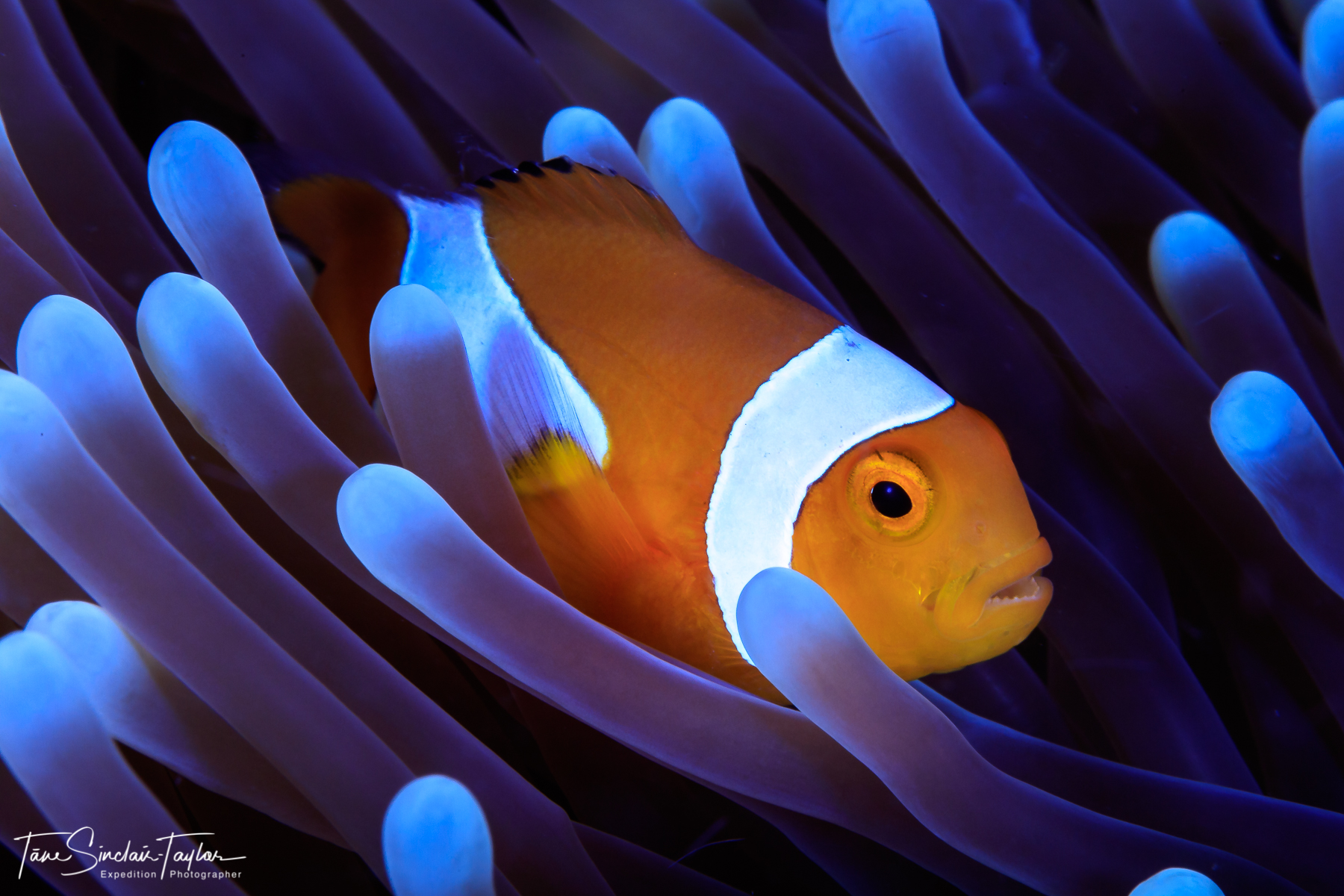Finding Nemo’s genes

The orange clownfish (Amphiprion percula) is one of the most important species for studying the ecology and evolution of coral reef fishes. Photo by Tane Sinclair-Taylor.
An international team of researchers mapped the genome of the orange clownfish, providing the research community with an invaluable resource to decode the response of fish to environmental changes, including climate change.
In a breakthrough study led by KAUST and the ARC Centre of Excellence for Coral Reef Studies (Coral CoE), researchers used bioinformatics programs and the resources of KAUST's Supercomputing Core Lab and expertise from the third-generation sequencing team in the Bioscience Core Lab to create one of the most complete genetic maps for the orange clownfish, a common reef inhabitant and star of the Disney movie "Finding Nemo."
"This genome provides an essential blueprint for understanding every aspect of the reef fish's biology," said lead author Dr. Robert Lehmann, a postdoctoral fellow from KAUST in the University's Integrative Systems Biology Lab. "It contains 26,597 protein coding genes...[L]ike the world's largest jigsaw puzzle, it took patience and time to assemble."
The orange clownfish Amphiprion percula is not only the most recognized reef fish on Earth, but it is also one of the most highly studied.

The new genome assembly provides an essential blueprint for understanding every aspect of the orange clownfish’s (Amphiprion percula) biology. Photo by Tane Sinclair-Taylor.
"For example, the clownfish is a model for studying sex change in fishes. It has also helped us understand patterns of larval dispersal in reef fishes and it's the first fish species for which it was demonstrated that predator avoidance behaviour could be impaired by ocean acidification," he noted.
The team used state-of-the-art technology to sequence the clownfish's genome. Their genomic and transcriptomic data is now available via the Nemo Genome DB database at http://nemogenome.org.
"The clownfish comprises approximately 939 million nucleotides that needed to be fit together," said co-author Dr. Timothy Ravasi. "This is an extremely valuable resource for the research community and will further establish the orange clownfish as an ideal lab subject for genetics and genomic studies."
"This is one of the most complete fish genomes ever produced," added co-author Professor David Miller of Coral CoE at James Cook University. "Using the PacBio single molecule, real-time sequencing technology enabled us to achieve a polished result."
The research is dedicated to the memory of Dr. Sylvain Forêt, a brilliant scientist, co-author, colleague and friend.
Related stories:
- Saving the world's oceans
- Reef corals have endured since the 'age of dinosaurs' and may survive global warming
- The internet of sea things
-
KAUST launches Fugro Center of Excellence for Marine Technology
-
Exploring the Metaorganism Frontier

